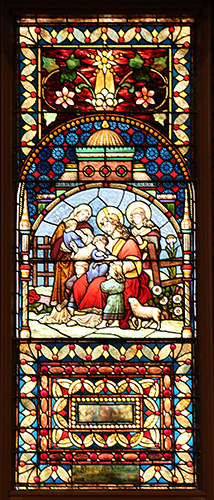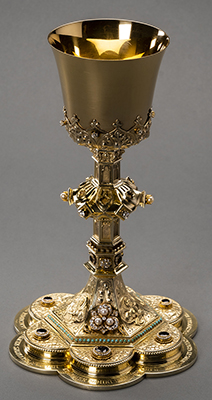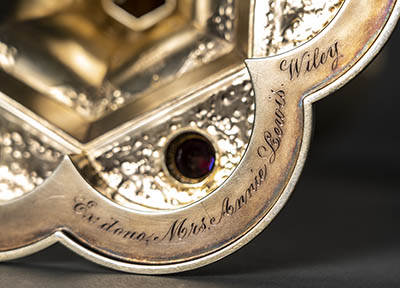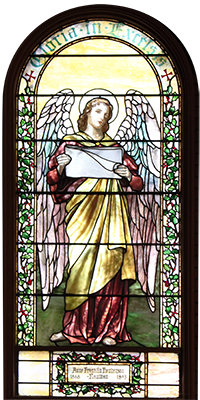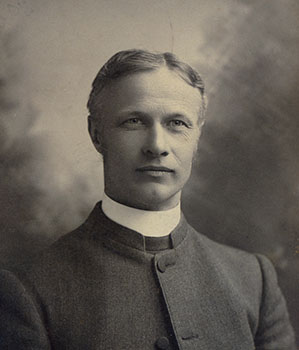Saint James 1800 – 1899
The nineteenth century brought great changes to Saint James as it participated in the many economic, social and spiritual challenges and opportunities of the age. It was blessed by a number of visionary leaders, both lay and ordained, men and women, whose gifts enriched the lives of many parishioners and people in the wider world. In addition to the creation of churches, schools and social service institutions, and the expansion and beautification of Saint James itself, Saint James offered a richer and more participatory spiritual life. However, there were occasions when Saint James people demonstrated society’s prejudices around race and gender.
1744 – 1799 | 1800 – 1899 | 1900 – Present
-

Saint James holds a memorial service for George Washington
On December 14, 1799, George Washington—General, President and an Episcopalian died. The Pennsylvania Legislature, then meeting in Lancaster, the capital of the state, designated January 7 as a “day of mourning and respect for the memory of the illustrious Washington.
Under the orders of Major General Edward Hand, Washington’s comrade in arms and vestryman of Saint James, there was a military procession, joined by politicians, clergymen and Masons as well as other citizens, from the court house to Saint James. The Rev. Joseph Clarkson gave the sermon and the empty coffin, which had been carried in the procession, was left in the church as a sign of respect for Washington.
-
Parishioner involved in one of the earliest recorded uprisings against slavery
Major Thomas Boude, a lumber merchant and former US Congressman, purchased the young boy Stephen Smith as an indentured servant from the Cochran family near Harrisburg and took him to live and work in Columbia, Lancaster County. When Smith’s mother ran away from the Cochran’s and Mrs Cochran attempted to seize her, the resistance and outcry of the Boude household, brought Thomas to the rescue. To avoid further incident, he purchased Mrs Smith out of bondage. Later when Stephen came of age, he purchased his freedom too and helped establish him as a lumber merchant. Smith became an active supporter of the Underground Railroad movement and a minister in the African Methodist Episcopal Church. Click image to enlarge.
-

A bible society is started in Lancaster
The Rev. Joseph Clarkson was one of the founders of the Lancaster Bible Society part of the Pennsylvania Bible Society, a nonsectarian organization which distributed bibles and portions of the bible for free. He later served as president.
-

Charlotte is buried in the plot next to this gravestone marking her twin daughters’ grave in the churchyard.
The first American woman missionary arrives in India
A former parishioner of Saint James, Charlotte White, daughter of the late William Augustus Atlee, made history when she was appointed a missionary by the Baptist Board of Foreign Missions, thereby becoming the first American woman missionary of any denomination.
Shortly after arriving in Calcutta in 1815 after 129 days at sea, Charlotte married Joshua Rowe, a British Baptist missionary. The couple served at a mission station at Digah, near Patna, teaching the faith to British soldiers and local people. Charlotte had great gifts as a linguist, teacher and administrator.
Following the death of her husband and the British missionary society’s resistance to funding her as a missionary, she returned to America. She was buried at Saint James, next to her daughters, in 1863. Read more about Charlotte Rowe Hazen
-
 Ann Coleman presents a silver flagon to the church
Ann Coleman presents a silver flagon to the churchThis gift seems to have been the earliest gift of communion silver to Saint James. Ann was the daughter of James Old, an early ironmaster, and was married to Robert Coleman, who was at that time the most successful ironmaster in Lancaster County. Robert was an influential vestryman and major benefactor of Saint James. While he unsuccessfully opposed the Rev. William Augustus Muhlenberg’s plans to hold evening services at the church, he seems to have thwarted the romance between his daughter Sarah and Muhlenberg.
-

The vestry decides to replace the original Saint James building
In 1818 the vestry began to seek subscriptions for a new brick building to replace the old stone one. Among the subscribers was James Buchanan, later President of the United States.
Although he himself was a Presbyterian, his niece Harriet Lane was a member of Saint James. In 1819 the old building was razed to the ground and the site cleared.
-
Well-known local African woman buried in the churchyard
Dinah McIntire, aged around 100 years old, was buried at Saint James. She was often referred to as “Dinah the Fortune Teller.” Enslaved since birth in Maryland, she was for some time the property of Col. Matthias Slough, a Revolutionary War veteran, a member of Saint James and innkeeper of the White Swan Tavern, Lancaster. She is known to have owned property on West Vine Street, which the community referred to as Dinah’s Hill.
-

The new building is consecrated
On October 15th Bishop William White of Pennsylvania consecrated the new church which was wider than the old stone one. He was assisted by the rector, Joseph Clarkson, the Rev. Levi Bull and the Rev. William Augustus Muhlenberg. The next day the Bishop confirmed 30 Saint James members.
I certify that on the 15th day of October in the year of our Lord One Thousand Eight hundred and Twenty, I have consecrated and set apart for divine worship the rebuilt Church of St. James in the City of Lancaster, agreeably to the form of consecration of a church or chapel ordained and of one in the Protestant Episcopal Church in the United States of America. Witness my hand and seal in the year and on the day above mentioned.
-

William Augustus Muhlenberg*
William Augustus Muhlenberg arrives
Following the consecration of the new church, Muhlenberg was invited to become co-rector of Saint James with Clarkson and arrived in the parish in December.
Only aged 24, he was the youngest age possible for a priest in the Episcopal Church. During his time at Saint James, he focused on improving secular and religious education as well as re-envisioning the Episcopal Church’s sense of mission and liturgy.
His ministry at Saint James ended in 1826 largely due to the hostility of the Coleman family.
Read more about William Augustus Muhlenberg
*Jacob Eichholtz, 1836 Oil on canvas Courtesy of The Arthur H. Aufses, Jr., MD Archives, Icahn School of Medicine at Mount Sinai, Mount Sinai Health System, New York, NY.
-
George Bechtel is the first named organist
The first organist recorded at Saint James was George Bechtel who was paid $125 a year. When the new church was built the organ was placed in the rear gallery and air supplied by bellows pumped by the sexton.
-
Saint James African Church is built
 In 1817, fifty free people of color, including Saint James worshipers, decided at the home of James and Elizabeth Clendenin to establish a separate church for people of African descent in Lancaster. They solicited support from the African community as well as members of Saint James and Trinity Lutheran churches. The first house of worship built on Strawberry Street by 1821 was known until the late 1840s as the Saint James African Church. The name Bethel African Methodist Episcopal Church was adopted later in the 1880s, and it remains Lancaster County’s oldest predominantly black congregation.
In 1817, fifty free people of color, including Saint James worshipers, decided at the home of James and Elizabeth Clendenin to establish a separate church for people of African descent in Lancaster. They solicited support from the African community as well as members of Saint James and Trinity Lutheran churches. The first house of worship built on Strawberry Street by 1821 was known until the late 1840s as the Saint James African Church. The name Bethel African Methodist Episcopal Church was adopted later in the 1880s, and it remains Lancaster County’s oldest predominantly black congregation. -
The first Sunday school opens
The Rev. William Augustus Muhlenberg opened the first Sunday school on May 27 1821. Soon there were 260 pupils, mainly girls, who learned to memorize Bible passages, hymns and the church catechism. They met in a school house, two stories high, built on the site of the present parish house.
-
Saint James supports the missionary
work of the Episcopal ChurchThe Rev. William Augustus Muhlenberg established the Lancaster branch of the Domestic and Foreign Missionary Society of the Protestant Episcopal Church whose members were the leading members of the congregation. The purpose of the Society was to send missionaries to the new territories and states on the western frontier.
-

Lancaster’s first public school David McNeely Stauffer, 1881. Courtesy of LancasterHistory Heritage Center Collection.
Public Education begins in Lancaster
Drawing on his experience as a director of public schools in Philadelphia, Muhlenberg was responsible for establishing public education in Lancaster, making it the second school district in Pennsylvania. A public school building was built on the south east corner of West Chestnut and Prince Streets for 600 pupils.
Click here to read more about Saint James’ contribution to education.
-
Health care for the poor
Under Muhlenberg’s leadership the Saint James Dispensary was created for “medical relief to the indigent”. It was funded by supporters paying one dollar annually. Public support was solicited widely as the dispensary was to serve the poor of every denomination.
-
Appointment of the first paid singer
Emanuel Trissler, was appointed “chorister” and paid $40 a year.
-
 Levi S. Ives becomes co-rector
Levi S. Ives becomes co-rectorThe Rev. Levi Ives served for less than one year before becoming assistant minster of Christ Church, New York. In 1831 he became bishop of North Carolina where he controversially baptized enslaved people. Drawn to the Oxford movement which reasserted the apostolic and catholic heritage of Anglicanism, Bishop Ives, having left the Episcopal Church, became a member of the Roman Catholic Church on Christmas Day in 1852. He was then deposed as bishop and was no longer recognized as a priest.
-
Muhlenberg enriches congregation worship
In his pamphlet A Plea for Christian Hymns, published while he was at Saint James, Muhlenberg called for a greater quantity and quality of hymns to be available for congregational singing than those published in the first Episcopal Prayer Book. In 1823 he published his own collection of hymns which he began to use at Saint James.
At the request of General Convention Muhlenberg and the Rev. Henry Onderdonk, who later became Bishop of Pennsylvania, prepared a hymn book entitled Hymns of the Protestant Episcopal Church in the United States of America. It was used until 1872. Muhlenberg was the author of five of the hymns.
-
 Samuel Bowman becomes co-rector
Samuel Bowman becomes co-rectorThe Rev. Samuel Bowman, whose long ministry expanded both Saint James vision of evangelization and mission to those in need, became co-rector at the age of 27 and rector on the death of Dr. Clarkson in 1830. He also knew personal suffering, experiencing the death of his 28 year old first wife, Susan and the early deaths of two children. Bowman’s second wife was Harriet, daughter of Joseph Clarkson. His two wives are buried near his grave (carved with a mitre) in the churchyard.
-
A home for orphans
 The foundation of the Saint James Orphan Asylum was one of the first fruits of the parish under Bowman’s leadership. Initial funding came from two legacies: one from the late Mary Yeates Smith, a daughter of Judge Yeates and widow of Judge Charles Smith; the other a gift of her son, the late Theodore H. Smith. The interest from these legacies combined with state funding of $1000 a year for 10 years provided care to destitute orphans regardless of religious denomination.
The foundation of the Saint James Orphan Asylum was one of the first fruits of the parish under Bowman’s leadership. Initial funding came from two legacies: one from the late Mary Yeates Smith, a daughter of Judge Yeates and widow of Judge Charles Smith; the other a gift of her son, the late Theodore H. Smith. The interest from these legacies combined with state funding of $1000 a year for 10 years provided care to destitute orphans regardless of religious denomination. -
Saint James supports public education
When the public education system was still in its infancy, there was a shortage of space for pupils. Through the influence of rector and another parishioner serving on the School Board, Saint James rented the Sunday school house to the “common schools”.
-
Fire destroys the Sunday school house
On March 19 a fire completely burnt down the Sunday school building. It was rebuilt within 8 months and furnished with benches which had been saved from the fire. Pupils of the common schools were also taught in this new building.
-
 A growing church needs
A growing church needsThe ministry and popularity of the rector, Samuel Bowman, drew more people to Saint James which required more seats. The church was enlarged according to the plan produced by James Damant, the organist. The east end of the church was extended about 15 feet and above the altar was built a large round-topped window. On the wall under this window were the Creed, the Lord’s Prayer and the Ten Commandments in gold letters on dark panels. A marble slab was placed on the altar. The gallery, where people of lower income sat, consisted of 2 ranges of pews and one broad aisle. During construction the congregation worshiped at the Moravian Church.
-
The parish builds a rectory next to the church
Since the 18th century Saint James had struggled to provide suitable housing for its clergy. In October 1847 the rectory, which we know today (with some later additions), standing on North Duke Street, was completed at the cost of $2,666.
-

The Rev. Dr. Henry Augustus Coit Courtesy of Ohrstrom Library Digital Archives at St. Paul’s School, Concord, NH.
Saint James creates a parochial school

“The Old School at St. Paul’s School” Courtesy of Ohrstrom Library Digital Archives at St. Paul’s School, Concord, NH.
The Rev. Samuel Bowman established Saint James Parochial School to provide children with an education with religious training. Among its instructors was Henry Augustus Coit who taught classics. Shaped by attendance at Muhlenberg’s Flushing Institute on Long Island, he later became the first rector of St. Paul’s School, Concord, NH.
Following the creation of the daily parochial school, the Commons Schools could no longer use Saint James’ Sunday school house. Click here to read more about education at Saint James.
-
 Hannah K. Benjamin starts her ministry at Saint James
Hannah K. Benjamin starts her ministry at Saint JamesHannah K. Benjamin was born on Saint Thomas in the West Indies and a convert to Christianity from Judaism. She was recruited by Bowman to manage the parish school but after a year she took over the running of the Orphan Asylum until 1878. She also found time to work for the founding of Saint John’s Free Episcopal Church. Her mission Sunday school in the old American Fire Engine House later inspired the founding of Saint James Chapel in south east Lancaster. She is buried in the churchyard.
-
A new ministry to vulnerable people
Under the Rev. Samuel Bowman’s leadership the Church Home was founded as a comfortable home for the sick and poor parishioners on Orange Street. In addition to financial support, church members donated food from their gardens and cupboards. It received a charter in 1857. In 1861 it was renamed Bishop Bowman House following his death. Since its closure in 1916, its invested funds have been used for the care of the elderly, sick and low income people in the community.
-
The sexton’s house is built
The house on Cherry Street cost $500 to build and has been in continuous use.
-
Franklin and Marshall College is created
The Rev. Samuel Bowman played a prominent role on the Committee of Supervision of Franklin College when the college was revived in 1840. The success of joining that college with Marshall College was due in large part to his work and that of the Hon. James Buchanan. The former was then elected president of the Board and Bowman became a vice president of the new college.
-
Bowman founds Saint John’s Free Church
The Rev. Samuel Bowman had long desired to establish a church in which the seats were free to all and not just the preserve of the wealthy. Saint John’s Free Church was the first free church in the Diocese of Pennsylvania. Bowman personally donated $1,000 to the project which equaled a 10th of the building costs. He was its first rector. In 1857 when there were 47 families in the congregation and Saint John’s was free of debt, he resigned as its rector and the church became independent of Saint James.
-
A new preparatory school for boys
The Yeates Institute of Lancaster, a preparatory school for boys was among the first boarding schools of the Episcopal Church. The school was endowed by Miss Catherine Yeates in memory of her father, the Hon. Jasper Yeates, Judge of the Supreme Court of Pennsylvania and warden of the Church for many years. The school became widely known for its classical training of boys. It was originally situated on the corner of Chestnut and Charlotte Streets. Click image to enlarge.
-
 Rector becomes Assistant Bishop of Pennsylvania
Rector becomes Assistant Bishop of PennsylvaniaThe Rev. Samuel Bowman was consecrated in Christ Church, Philadelphia on August 25. From then until his death in 1861 he combined this new ministry with being rector of Saint James and continued living in the rectory.
-
Jacob Isidor Mombert arrives as new rector
The Rev. Jacob Mombert was born in Cassel, Germany. A Christian convert from the Judaism, he was ordained a deacon in London by the Archbishop of Canterbury before ordination and ministry in Quebec, Canada. A scholarly man and gifted linguist, a doctorate in Divinity was conferred on him by the University of Pennsylvania.
-

 The first Asian person to become a naturalized citizen in Lancaster
The first Asian person to become a naturalized citizen in LancasterHong Neok Woo was educated by the American Church Mission established by the Episcopal Church in China. He was brought to Lancaster in 1855 by Dr. John S. Messersmith, a naval surgeon on the frigate USS Susquehanna, whose memorial stone can be seen in Saint James’ nave. A faithful member of Saint James, Woo learned the printing trade and in 1860 became the first Asian person to be naturalized in Lancaster County. He fought in the Union Army. He later returned to China and became a priest in Shanghai where he had a long and highly regarded ministry.
-
The Yeates Institute closes following disagreement
Miss Catherine Yeates, its founder, wanted to turn the school from a purely classical institute into a school focusing on theology as preparation for clergy. When the board decided that the funds could not be used for any purposes other than classical and academic instruction, the school was closed and the property sold. However, the board continued to meet.
-
The Civil War comes close to Lancaster
In an understated manner the minutes of the vestry alluded to the Battle of Gettysburg noting that ‘the regular meeting in July was omitted on account of the rebel army being in the State and threatening the County.” Yet some parishioners fought at Gettysburg and the Patriot Daughters of Lancaster, who had been organized by the Rev. Jacob Isidor Mombert in April 1861, nursed men wounded at that battle.
-
 Captain Robert M. Jeffries is buried in the churchyard
Captain Robert M. Jeffries is buried in the churchyardCaptain Robert M Jeffries of Company F, 115th Pennsylvania Volunteers was a parishioner. He was killed before Petersburg, VA at the head of his Company, aged 21 and lies buried with his family in the churchyard.
-
Yeates Institute founder not allowed to be trustee
Catherine Yeates who endowed the Yeates Institute was nominated to serve on its board of trustees. After the male candidate defeated her in the election, the vestry declared that only men could be trustees!
-

President Abraham Lincoln is assassinated
The assassination of Abraham Lincoln was noted in the minutes of the vestry. He was described as a man “who in his honesty of purpose, his devotion to principle, his patriotism and love of his whole county was second to none who have been called by the people to the Presidential chair.”
-

African servant is buried in the churchyard
Louise Wells worked for Bowman household. When she died, aged 70, she was buried near the Bowman family. Her gravestone read,
“She hath done what she could.” -
 John P. McCaskey is elected to the vestry for the first time
John P. McCaskey is elected to the vestry for the first timeDr. McCaskey was to serve as senior warden of the church for 26 years and a vestryman for 68 years until his death in 1935. This is believed to be a national record for vestry service. He served as mayor of Lancaster 1906-1910. For 50 years he was a teacher and principal of the Boys’ High School. Two years after his death, the new high school was named in his honor.
-
Saint James builds a chapel in south east Lancaster
The Rev. Jacob Isidor Mombert decided to build a mission chapel in a section of the city viewed as lacking religious services. This plan was inspired by Hannah Benjamin’s mission Sunday school which had lacked a permanent home.
The mission chapel on the corner of Locust Street and Stony Alley was funded by individual subscribers and completed by January 1869. It was thereafter known as Saint James Chapel. In addition to a Sunday evening service, there was a Sunday school and a sewing school.
Click images to enlarge.
-
Edward Shippen Watson becomes rector
The Rev. Edward Shippen Watson was the great grandson of Edward Shippen, former Chief Justice of Pennsylvania and vestryman of Saint James. He was rector of Saint James the Less in Philadelphia before coming to Lancaster. He served as rector until ill-health caused him to resign in 1877.
-

Death of the great educationalist, Thomas Henry Burrowes
Thomas Henry Burrowes was one of Saint James’ most famous parishioners. He was one of the founders of the public school system of Pennsylvania and championed the cause of public education throughout his life. He held many important public offices including: Secretary of the Commonwealth of Pennsylvania; Superintendent of the Common Schools; and President of Pennsylvania State University (1866-71). He also found time to serve on the Saint James vestry and became the ninth Mayor of the City of Lancaster, PA.
Burrowes effect on education was extensive. He drafted the 1857 Normal School Law which led to the creation of Millersville University and the PA state university system of today. He also founded and edited the influential Pennsylvania School Journal (1852-1870).
His monument in Saint James’ Churchyard reads, “He gave his best; his giving was princely; his work has been grandly cumulative and will be so through the ages. To no man now living does Pennsylvania owe so great a debt of gratitude.”
-
A new diocese is created in Pennsylvania
In November 1871 a new diocese called the Diocese of Central Pennsylvania (not to be confused with the present diocese) was created which consisted of the counties between the greater Philadelphia area and Pittsburgh. This diocese owed a great deal to the vision and influence of the Rev. Jacob Isidor Mombert. The Right Rev. Dr. M.A. DeWolfe was the first bishop of the new diocese. With the creation of the Diocese of Pittsburgh in 1863, there were now 3 dioceses in the State.
-

A beautiful church
Under the leadership of the Rev. Edward Shippen Watson, Saint James was enlarged and the interior transformed.
 Formed by the Oxford movement and an aesthetic sense cultivated in Europe, Watson oversaw the construction of apse in the chancel and the extension of the building east in accordance with the plans of the architect Charles M. Burns. The ceiling of the new apse was painted by Ludwig Reingruber, artist and painter then living in Lancaster.
Formed by the Oxford movement and an aesthetic sense cultivated in Europe, Watson oversaw the construction of apse in the chancel and the extension of the building east in accordance with the plans of the architect Charles M. Burns. The ceiling of the new apse was painted by Ludwig Reingruber, artist and painter then living in Lancaster. -

Cyrus Frederick Knight becomes rector
The Rev. Dr. Cyrus F. Knight arrived in Lancaster from Hartford, CT. During his time Saint James was to see extensive developments in its appearance and worship. In addition to his ministry at Saint James, he served as a deputy to the General Convention.
-
Saint James joins the Woman’s Auxiliary
In 1871 the Woman’s Auxiliary was formed by Mary Abbot Emery and recognized by the General Convention of the Episcopal Church as a department of the Board of Missions. This voluntary association of church women recruited missionaries, trained teachers and raised funds through a system of regular giving. Local women’s missionary and outreach organizations were united to support the mission of the Episcopal Church. During the rectorship of the Rev. Cyrus Knight, the sewing guild was renamed the Woman’s Auxiliary.
-
The Yeates School reopens
Following a nearly 15 year gap, the board decided to reopen as a school for boys and John G. Mulholland became headmaster. For the first two years a building was leased and in 1880 the school moved to a building which it had bought on the north east corner of Duke and Walnut Streets.
-
The first steps to making all pews “free”
In January 1878, soon after Knight’s arrival, the vestry declared the pews were “free and open to all” for the evening service “if the rector shall decide to have regular Sunday evening services in the evening instead of, as heretofore, in the afternoon.”
-
Church sees major architectural improvements
Change began when the vestry ordered a new organ which required a new chamber to be built where the vesting room had once stood. Accordingly, the organ loft at the west end of the church was removed and the side galleries taken out. At that time an arch opening into the chamber was constructed in an architectural style similar to the great chancel arch. Choir stalls were also put in. The upper windows were made longer and all side windows, upper and lower, were made narrower by the length of a brick on each side. Three aisles replaced the former two. The old organ was installed in Saint John’s Church and later removed to Saint Mark’s Episcopal Church, Johnstown, where it was destroyed in the great flood of 1889.
-
 Saint James gets a tower
Saint James gets a towerThe wooden cupola which had served as a bell house since the consecration of the church in 1820 was declared unsafe and was pulled down. A brick tower was constructed. At the same time the west wall of the church was extended about 20 feet to Duke Street and the font moved to the west end according to the plans of Charles M. Burns. At this time the five apse windows were installed, designed by J.C. Spence of Montreal. Click image to enlarge.
-
A new choral tradition begins
Until Knight, the choir consisted only of adults. He introduced a vested choir of men and boys in the early 1880s. In 1883 the Ross Music Fund was established by Miss Mary E. Ross of Philadelphia who presented $1,000 to be devoted to the creation of a fund in support of church music at Saint James.
-

Harriet Lane Johnston gives
 two windows as a memorial to her eldest son
two windows as a memorial to her eldest sonIn 1882 two stained glass windows, one depicting Christ in the temple teaching learned men and the other of the Archangel Michael were erected by Harriet Lane Johnston in memory of her son, James Buchanan Johnston, who died when 14 years old. Harriet was a Saint James parishioner and niece of President Buchanan as well as a major benefactor of the National Episcopal Church.
-
 Students honor their teacher
Students honor their teacher
with a stained glass windowMiss Margaret Markee was a teacher and principal of a Lancaster School district “secondary school” before managing the primary department of Saint James Parochial School for the last five years of her life. When she died in at the age of 44 in 1875, children sang the hymn Jerusalem, the Golden at her funeral service. In 1884 her former pupils from the parish school presented in her memory a window showing Christ surrounded by children. She is buried in the churchyard. Click image to enlarge.
-
Saint James Parochial School closes
In 1872 the school had 3 teachers and 120 pupils, but by 1889 there was 1 female teacher and 12 female pupils. A lack of paying pupils caused by the development of the public school system and high schools led to its closure.
-
A new rector arrives
According to The History of Saint James’ Church by H.M.J. Klein and William F. Diller, the outstanding event of the Rev. Percy J. Robottom’s ministry was the celebration of the 150th anniversary of the founding of the church in 1894. Due to a breakdown in his relationship with the vestry, Robottom was forced to resign in 1900.
-
A young men’s society begins
In the late 1880s there was a growing concern that the church was becoming too female and that this was causing men to turn away from church participation. The increased visibility of women’s work and organizations inspired new thinking about male faith formation and participation. At the suggestion of the Rev. Percy Robottom, the Church Brotherhood, a young men’s society, was established with two purposes: to improve personal conduct and to spread Christ’s Kingdom. One action the Brotherhood undertook was to ask the Hamilton Club to donate old magazines and papers to local hospitals and the almshouse.
-
Another men’s society begins
The Saint James Chapter of the national organization the Brotherhood of Saint Andrews was organized. The aims of the society were to attract men to the parish, keep boys in church, to understand and spread the knowledge of the Episcopal Church. Members were admitted at a church service. Its first director was John M. Davidson.
-
 “The most costly and beautiful
“The most costly and beautiful
communion cup in America”Mrs. Wiley, was the wife of Capt. James Wiley of Bethlehem, PA and the daughter of the Hon. Ellis Lewis,
 Chief justice of the Supreme Court of Pennsylvania and a former vestryman of the Church. In her will she bequeathed to Saint James money for the manufacture of a golden chalice to be set with all her jewels and directed it be used at communion services at least 3 times a year – All Saints’, Christmas, and Easter. Click images to enlarge.
Chief justice of the Supreme Court of Pennsylvania and a former vestryman of the Church. In her will she bequeathed to Saint James money for the manufacture of a golden chalice to be set with all her jewels and directed it be used at communion services at least 3 times a year – All Saints’, Christmas, and Easter. Click images to enlarge. -
 Two tiffany windows are installed
Two tiffany windows are installedThe windows each showing the figure of an angel were installed either side of the chancel. The one on the south side was erected to the memory of Samuel H. and Mary F. Reynolds by their children. The one on the north side was erected in memory of Miss Anne Franklin Henderson Nauman. Click image to enlarge.
-
Parishioners start the first free kindergarten in Lancaster
Two parishioners, Mary Martin and Ellen Brubaker were instrumental in the establishment of the first free kindergarten in Lancaster. Mary had taught at Saint James Parochial School and for many years at the Boys’ High School. When the School District of Lancaster assumed the operations of the kindergarten, Miss Brubaker taught at Wickersham School until her retirement in 1940.
-

The Yeates School moves
In 1899 the Rev. Frederic H. Gardner became headmaster. He brought with him new teaching methods and a commitment to raising the school’s endowment. That same year the school’s trustees bought a beautiful site at Greenland along Lincoln Highway East. Known as Eshleman Mill the 107 acre property with a Georgian house, old mill and many other buildings provided an idyllic setting for a school.
1744 – 1799 | 1800 – 1899 | 1900 – Present
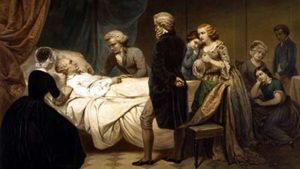
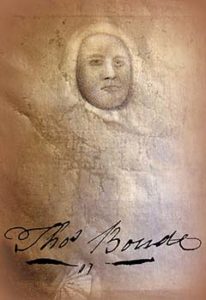
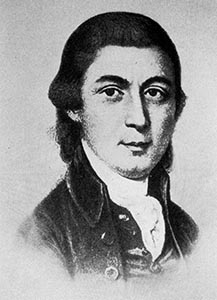
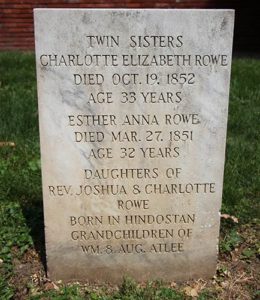
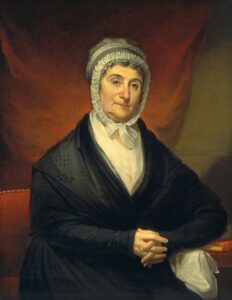 Ann Coleman presents a silver flagon to the church
Ann Coleman presents a silver flagon to the church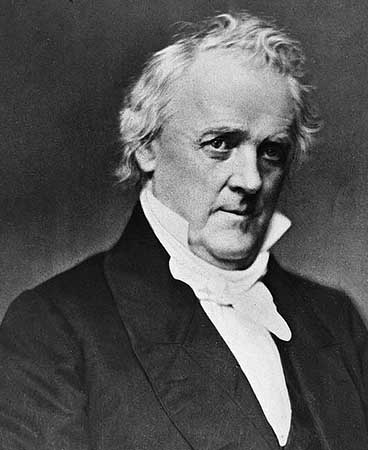
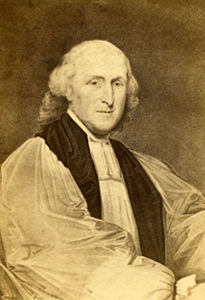
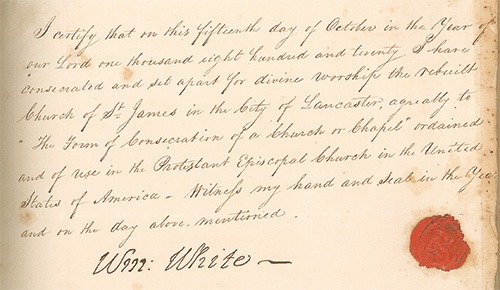
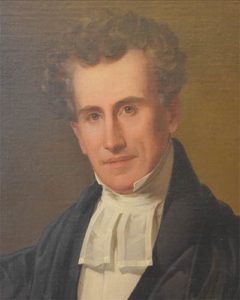
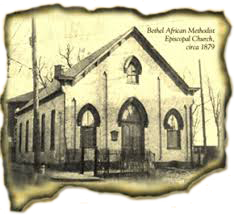 In 1817, fifty free people of color, including Saint James worshipers, decided at the home of James and Elizabeth Clendenin to establish a separate church for people of African descent in Lancaster. They solicited support from the African community as well as members of Saint James and Trinity Lutheran churches. The first house of worship built on Strawberry Street by 1821 was known until the late 1840s as the Saint James African Church. The name Bethel African Methodist Episcopal Church was adopted later in the 1880s, and it remains Lancaster County’s oldest predominantly black congregation.
In 1817, fifty free people of color, including Saint James worshipers, decided at the home of James and Elizabeth Clendenin to establish a separate church for people of African descent in Lancaster. They solicited support from the African community as well as members of Saint James and Trinity Lutheran churches. The first house of worship built on Strawberry Street by 1821 was known until the late 1840s as the Saint James African Church. The name Bethel African Methodist Episcopal Church was adopted later in the 1880s, and it remains Lancaster County’s oldest predominantly black congregation.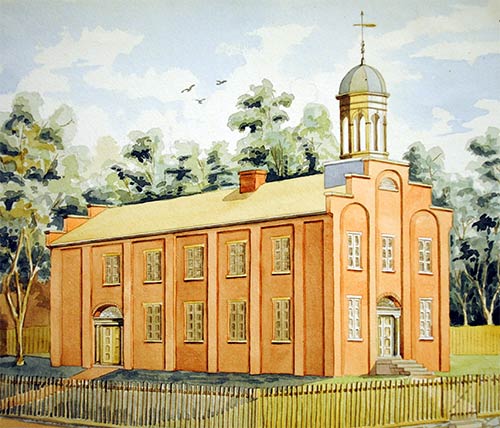
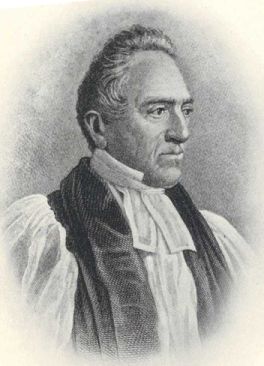 Levi S. Ives becomes co-rector
Levi S. Ives becomes co-rector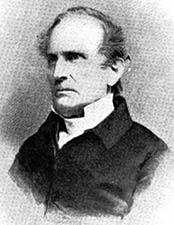 Samuel Bowman becomes co-rector
Samuel Bowman becomes co-rector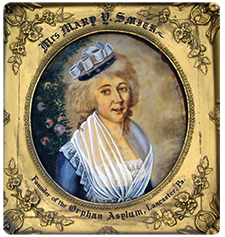 The foundation of the Saint James Orphan Asylum was one of the first fruits of the parish under Bowman’s leadership. Initial funding came from two legacies: one from the late Mary Yeates Smith, a daughter of Judge Yeates and widow of Judge Charles Smith; the other a gift of her son, the late Theodore H. Smith. The interest from these legacies combined with state funding of $1000 a year for 10 years provided care to destitute orphans regardless of religious denomination.
The foundation of the Saint James Orphan Asylum was one of the first fruits of the parish under Bowman’s leadership. Initial funding came from two legacies: one from the late Mary Yeates Smith, a daughter of Judge Yeates and widow of Judge Charles Smith; the other a gift of her son, the late Theodore H. Smith. The interest from these legacies combined with state funding of $1000 a year for 10 years provided care to destitute orphans regardless of religious denomination.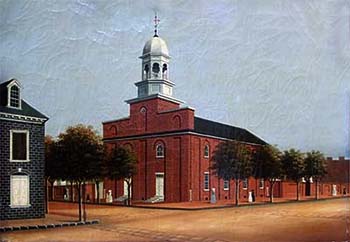 A growing church needs
A growing church needs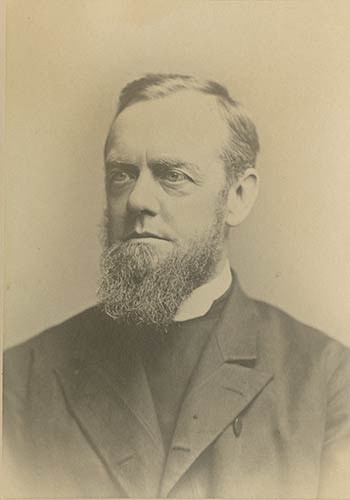
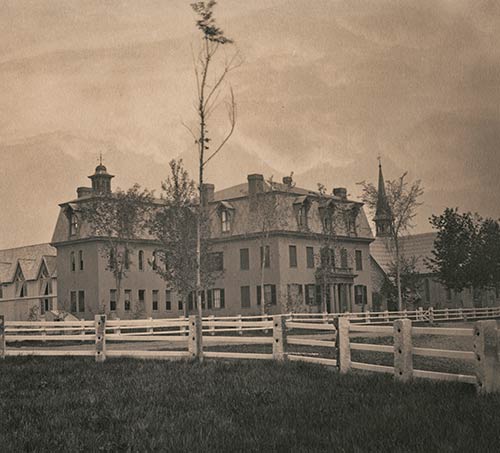
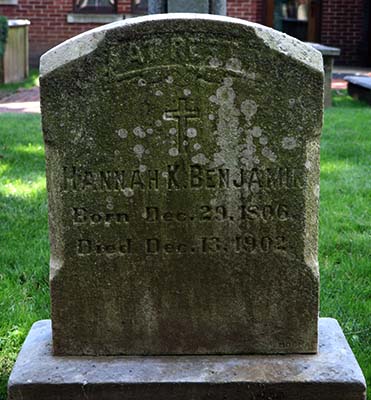 Hannah K. Benjamin starts her ministry at Saint James
Hannah K. Benjamin starts her ministry at Saint James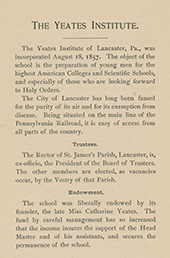
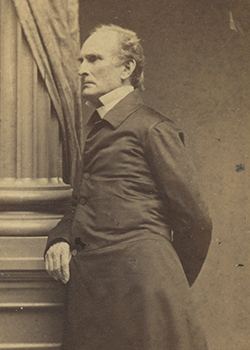 Rector becomes Assistant Bishop of Pennsylvania
Rector becomes Assistant Bishop of Pennsylvania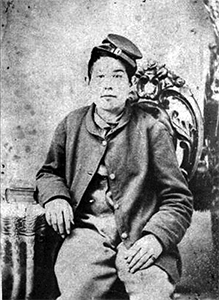
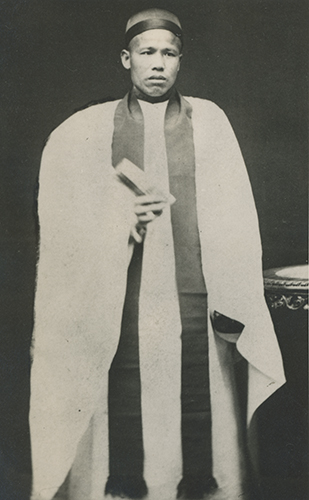 The first Asian person to become a naturalized citizen in Lancaster
The first Asian person to become a naturalized citizen in Lancaster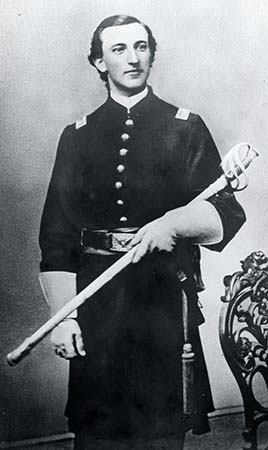 Captain Robert M. Jeffries is buried in the churchyard
Captain Robert M. Jeffries is buried in the churchyard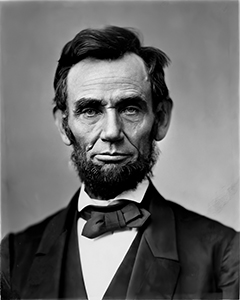
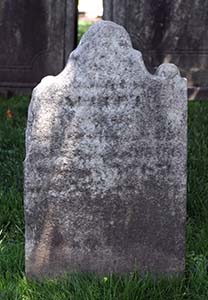
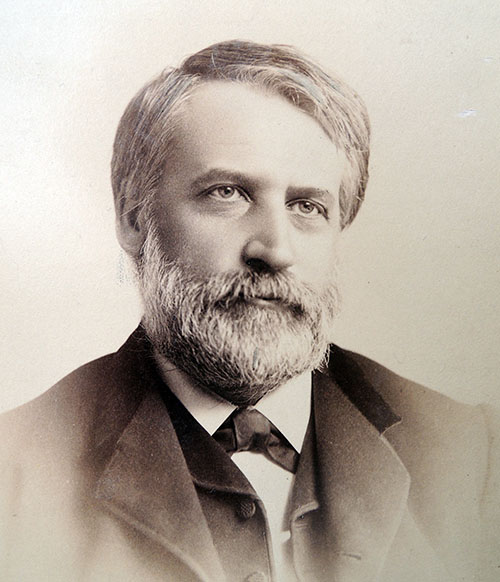 John P. McCaskey is elected to the vestry for the first time
John P. McCaskey is elected to the vestry for the first time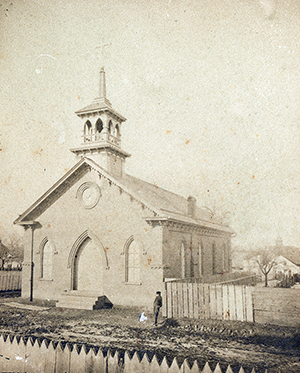
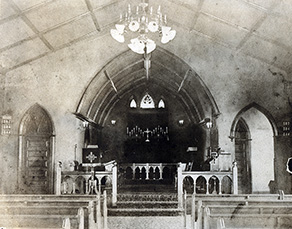
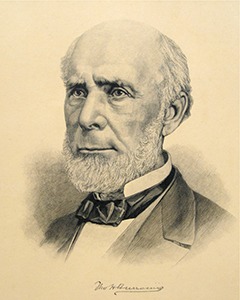
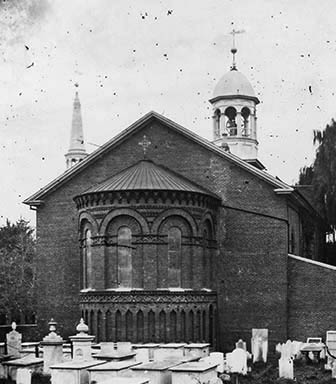
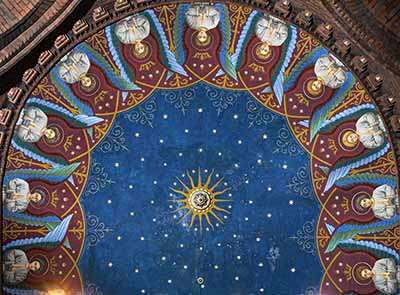 Formed by the Oxford movement and an aesthetic sense cultivated in Europe, Watson oversaw the construction of apse in the chancel and the extension of the building east in accordance with the plans of the architect Charles M. Burns. The ceiling of the new apse was painted by Ludwig Reingruber, artist and painter then living in Lancaster.
Formed by the Oxford movement and an aesthetic sense cultivated in Europe, Watson oversaw the construction of apse in the chancel and the extension of the building east in accordance with the plans of the architect Charles M. Burns. The ceiling of the new apse was painted by Ludwig Reingruber, artist and painter then living in Lancaster.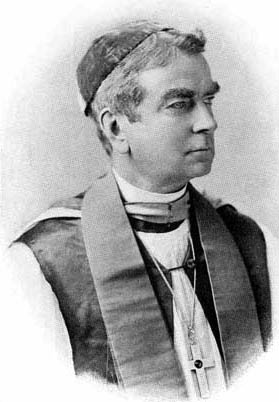
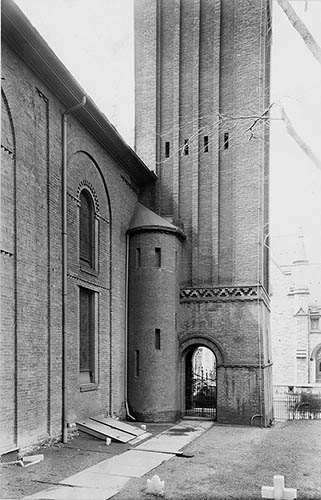
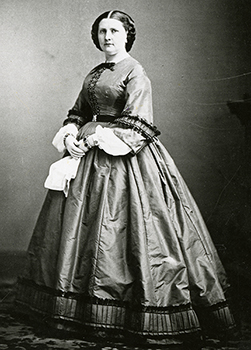
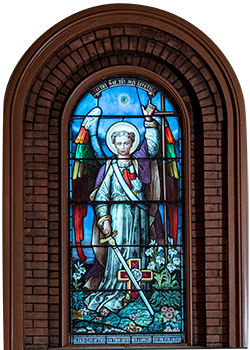 two windows as a memorial to her eldest son
two windows as a memorial to her eldest son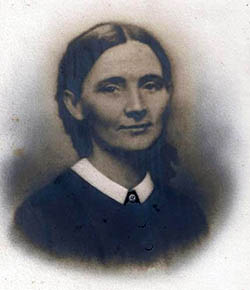 Students honor their teacher
Students honor their teacher